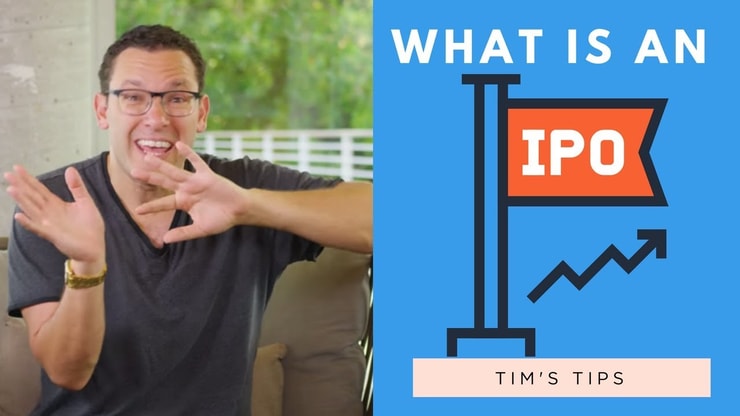A lot of new traders get confused when it comes to reverse mergers.
That’s OK. There’s a lot to take in when you’re learning the markets and how to trade. When I started trading 20+ years ago there was a lot I didn’t know too.
I didn’t have a trading mentor to teach me the ropes. That’s exactly why I started the Trading Challenge.
I saw so many stock promoters and fake gurus lying to newbies. There was a huge lack of information in this niche. Even now, most traders only show their ‘good’ trades and big wins.
I’m proud to be real in an industry of fakes. Follow me on Profitly — I show every single trade, win or lose. I’m not hiding behind lies. Instead, I show the process. That helps my students learn the process and how to think for themselves.
Like many things in the stock market, reverse mergers can sound intimidating but don’t worry. I’m here to break it down for you.
I’ll give you a market definition, list the pros and cons, and how you can be best equipped to identify one.
Table of Contents
- 1 What Is a Reverse Merger?
- 2 What Happens in a Reverse Merger?
- 3 Reverse Merger Steps
- 4 Reverse Merger Example
- 5 Why Do Companies Do Reverse Mergers?
- 6 Pros of a Reverse Merger
- 7 Cons of a Reverse Merger
- 8 Identifying Reverse Mergers: Signs You Need to Watch
- 9 What Is a Reverse Merger SPAC?
- 10 Upcoming Reverse Mergers in 2021
- 11 Is a Reverse Merger Good for Shareholders and Traders?
- 12 Frequently Asked Questions About Reverse Mergers
- 13 The Bottom Line on Reverse Mergers
What Is a Reverse Merger?
Think of it as an opportunity for a privately traded company to go public.
You’ve probably heard of the more common way companies go public — an initial public offering (IPO).
Reverse mergers are similar, sometimes called reverse IPOs or reverse takeovers.
The main difference between these two? Reverse mergers allow private companies to go public without having to raise capital.
There are a few reasons why a company might want to skip an IPO. More on that later.
Just remember, the main idea is that a private company is going public.
What Happens in a Reverse Merger?

Once a private company decides it wants to merge to go public, it looks for a publicly traded shell company.
To go public, the private company acquires a majority of the shares of the public company. The two companies become one. Usually, there’s a name and ticker change too.
Reverse Merger Steps
Once a private company finds a shell, both businesses do due diligence on each other.
Merging companies inspect each other by reading financial statements and checking company records.
The management could be trying to unload a headache of lawsuits and debt. It’s important to understand the motivation. And it can be different for each company.
The private company purchases a majority of the shares of the shell. Then the private management takes over and the new company exchanges any publicly held stock.
There’s a ton of paperwork within all these steps, too … but this covers the main points.
Reverse Merger Example
Here’s an example from back in December 2020…
OPES Acquisition Corp. (Nasdaq: OPES, OPESW) acquired BurgerFi International, Inc (NASDAQ: BFI) for $100 million. That’s quite a price tag.
In this example, a public company paid for and acquired a private one. It doesn’t matter who acquires who — the effect is the same.
OPES Acquisition was publicly traded until the two merged on December 17. The news spiked the stock up from $10 to the high teens.
The newly christened stock, BurgerFi International, Inc. (NASDAQ: BFI) tried to break through resistance a few times but has since rolled over.

Most reverse mergers don’t go well. So why would a company ever want to do one? Read on to find out…
Why Do Companies Do Reverse Mergers?
There can be many potential benefits to being a publicly traded company. Here are the pros and cons of going public through the “back door” and skipping a big IPO…
Pros of a Reverse Merger

IPOs can take a year or longer. Companies trying to go public face mountains of paperwork and they need time to promote their stock.
And there’s no guarantee — an IPO can flop if no one buys shares. Or if the market conditions are bad, the IPO underwriters can put it on hold or even cancel it.
Reverse mergers offer an alternate, less-regulated approach to going public.
They can take as little as 30 days to complete. Relaxed guidelines can also mean fewer hiccups.
Going public can mean nice perks for management and institutional investors…
The company’s shares start trading on an exchange, which offers more liquidity. Original investors can liquidate their positions more easily. Before, any shareholder who wanted to sell their position had to ask the company to buy back shares.
Many public companies offer employees stock options. These are incentive plans to thank workers for doing their jobs and motivate them to work harder. The more profitable the business, the more valuable the stock, right?
Public companies also have the option of raising money by issuing more shares. That cash goes into future investments and hopefully higher profits.
Management can use their shares as currency to acquire other public companies. They expand their operations and increase in value.
Merged public companies can also deduct past public shell losses from future taxes. That gives them a tax cut in the future to allow for less restricted growth.
It may sound like a great opportunity for private businesses. But they don’t always go as planned…
Cons of a Reverse Merger
The SEC warns traders about them. A lot of companies that merge end up failing within a few years.
Combining two companies is hard. There’s no getting around it. Sometimes management teams slack on due diligence.
The public shell company is usually a shell for a reason.
The business that used to exist is now a structure waiting for a more profitable firm to fill it.
It’s up to the private management to make sure there aren’t any outstanding liabilities. Pre-existing issues can complicate business functions.
Sometimes all goes well and the two businesses merge successfully.
But problems can arise when the private management attempts to run a publicly traded company.
There’s more regulation and oversight once a company goes public. Meeting those standards can be stressful and hurt daily business operations.
Identifying Reverse Mergers: Signs You Need to Watch
I never try to predict what will happen in the stock market. Instead, I react. So I don’t try to guess when a company will go public. But following financial news can give you a heads up of when you might expect one.
Be careful … Both companies have the option to back out. Just because they announce a merger doesn’t mean it will happen.
What Is a Reverse Merger SPAC?
Special purpose acquisition companies (SPACs) are speculative shell companies. Their only goal is to merge with a profitable private business.
SPACs have an initial public offering and use the generated revenue to find a company to take public. They have two years to do it otherwise their funds will dissolve.
Over the last few years, SPACs are heating up. They’re raising more money and taking more companies public.
I don’t teach my students to buy SPACs before they announce a merger. Holding through news can be risky. You never know how a stock will react after the news comes out.
You can find upcoming SPACs on sites like spacinsider. But the information isn’t free. You’ll have to pay for a subscription to access certain parts of the website.
Upcoming Reverse Mergers in 2021
If you search the internet you’ll find tons of SPACs with ‘promising’ outlooks. Here’s my tip…
Be skeptical. Always do your due diligence and take everything with a grain of salt.
Remember what I said earlier? This is an industry full of fakes. It’s your job to sift through the BS to find plays that make sense to you.
As always, cut losses quickly. Any play can go against you, no matter what your research says or how strongly you feel. The market will humble you.
If you’re looking for stocks to watch to start your education, sign up for my no-cost watchlist. I send it out every Sunday. I don’t trade every stock on the list, but every pick has the potential to fit one of my patterns.

I get this question a lot. The answer isn’t as straightforward as you might like…
It depends.
Some go well and business takes off.
Usually, though, these mergers have financial and administrative problems. The lack of oversight allows for a greater potential for fraud and scams. Most end up trading as OTCs and pink sheets. They’re often unable to meet the standards of bigger exchanges.
Corporate shareholders of the public company can have their shares locked up. If the shell management dumps all their shares right after the merger, it could drive the stock down. There are rules that can forbid corporate shareholders from liquidating their positions too soon.
They don’t apply to regular traders. If you’re holding shares of the shell company, expect the new company to dilute your shares after the merger. Stock splits and second offerings are common here.
Frequently Asked Questions About Reverse Mergers
Let’s wrap this up with a few more answers to common questions…
How Long Does a Reverse Merger Take?
If both companies are dedicated and things go smoothly, it can happen in as little as 30 days. That’s an attractive aspect for many private businesses. The market can change quickly. Entering at a good time can be the difference between life and death for these companies.
How Much Does a Reverse Merger Cost?
They aren’t cheap. The price tag varies based on market conditions and several other factors. A private business can buy an OTC shell for around $400,000 … but that’s the tip of the iceberg. There are a lot of steps and fees involved.
More Breaking News
- Quantum Buzz: D-Wave’s Extraordinary Leap in Fiscal Bookings – Is it the Start of a Transformational Era?
- Rivian’s Surge: Delivery Triumphs Spark Investor Interest
- A Surprising Surge: Will EONR Maintain Its Upward Momentum?
Is a Reverse Merger Illegal?
No, it’s not illegal. Lack of oversight can result in fraudulent activities and scams. But the merger itself is completely legal. That’s why it’s best to research the two merging companies before deciding to place a trade.
What Does Reverse Triangular Merger Mean?
Triangular mergers are one of the most common. It’s a little different because the public company creates a subsidiary. The private company then merges with the subsidiary but keeps the original companies separate. The effect is the same, but the steps to get there are a little different.
The Bottom Line on Reverse Mergers
There are a lot of fakes out there. And the majority of companies in penny stock land end up failing, so don’t believe the hype.
Sure, now and then a private company goes public. The stock price soars, and everyone hears about it.
That’s not the norm.
I’ve been trading for over 20 years and teaching for over 10. And I’ve watched it happen again and again.
Don’t let anyone tell you how to trade — you have to learn your own strategies. They work differently for everyone.
As a trading mentor and teacher, I urge you to trade scared. Most traders lose because people fail to prepare and think the stock market is a way to get rich quick.
One of my goals is to teach newbies how to trade and stay safe. Check out my 30-Day Bootcamp. It’s a great place to build your trading foundation. I go through all the things beginners should know before placing a trade, including my #1 rule.
What do you think about reverse mergers? Would you trade one? I love to hear what you think!
Disclaimer
*Please note that these kinds of trading results are not typical and do not reflect the experience of the majority of individuals using our products. From January 1, 2020, to December 31, 2020, typical users of the products and services offered by this website reported earning, on average, an estimated $49.91 in profit. This figure is taken from tracking user accounts on Profit.ly, a trading community platform. It takes years of dedication, hard work, and discipline to learn how to trade. Individual results will vary. Trading is inherently risky. Before making any trades, remember to do your due diligence and never risk more than you can afford to lose.






Leave a reply